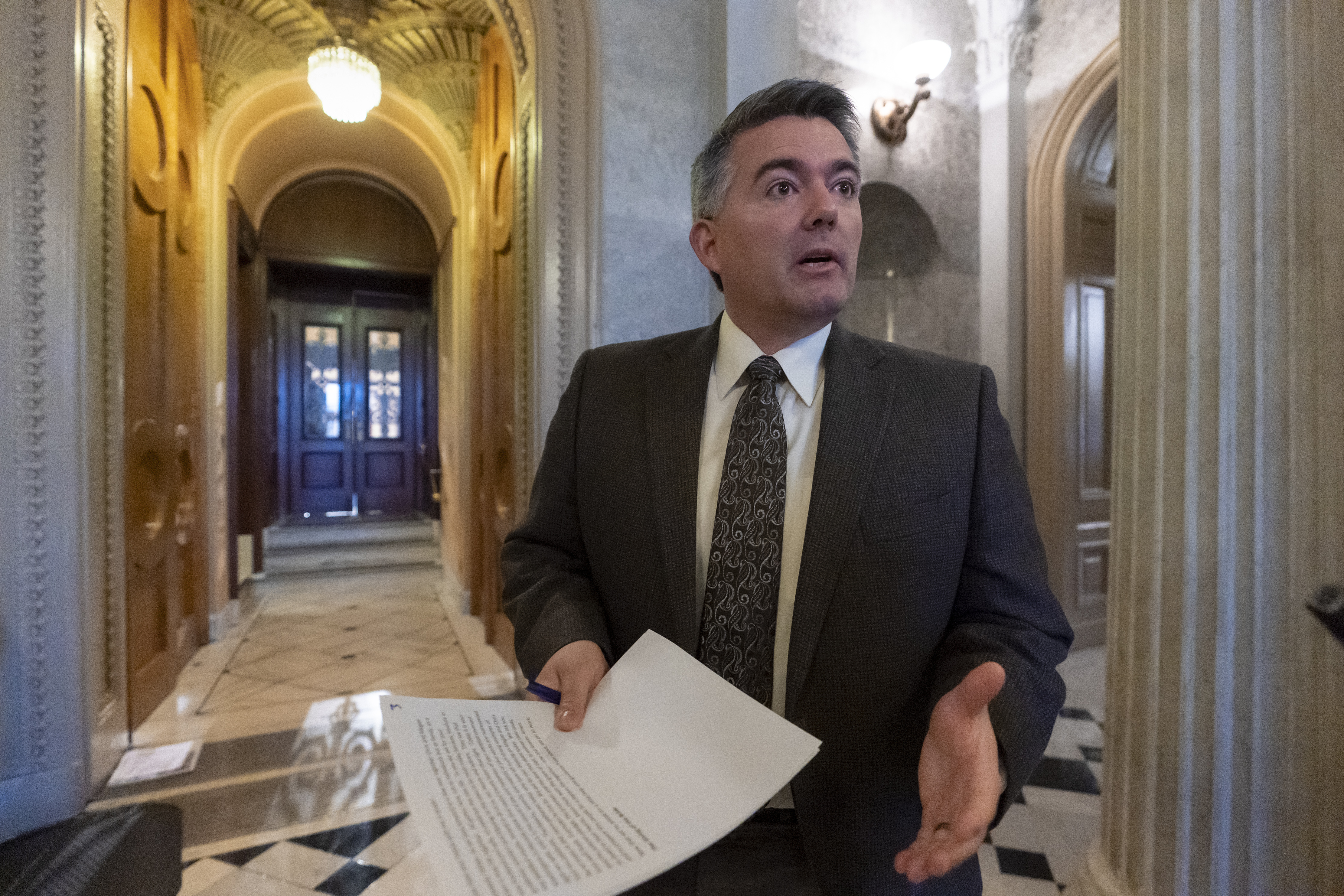
Republican Sen. Cory Gardner helped mastermind the GOP’s midterm strategy of pushing Senate candidates closer to President Donald Trump. But heading into his own 2020 re-election bid in Colorado, he’s allowing more distance with the not-so-popular president. And he’s not alone.
Sen. Thom Tillis of North Carolina is reviving his proposal for an immigration deal as part of talks to reopen the government. Centrist Sen. Susan Collins, who did not support Trump in 2016, faces a delicate balancing. In Arizona, Sen. Martha McSally has to consider her proximity to Trump as she runs to keep the seat she was appointed to after having lost to a Democrat in November. As Republican senators set out to run for re-election in states where views on Trump are mixed, they’re trying to figure out how closely to align themselves with Trump. “I made it clear when I ran for Senate that, when my party’s wrong, I’m going to say it,” Gardner said in an interview.
Gardner is one of two Republican senators up for re-election in states won by Democrat Hillary Clinton in the last presidential election; Collins is the other. Democrats will be on offense in 2020, on much easier terrain with a wider map of incumbent Republicans at risk. Winning the Senate majority will require a net gain of at least three seats — four if Republicans hold the White House. Democrats are expected to target Tillis and McSally, representing states where demographics are shifting against Republicans and where Democrats recently won statewide elections. Democrats also hope to field a strong candidate against Sen. David Purdue in Georgia, which has been trending their way, and are watching Kansas, where Secretary of State Mike Pompeo has been mentioned as a possible contender for a seat opening up due to a retirement.
Mike Noble, a Republican pollster in Arizona, said the 2020 election in Arizona probably will be a repeat of what McSally just encountered in 2018. She hewed close to Trump to survive a GOP primary but was rejected by voters in the general election. “This is just a replication of the situation she was put in during the campaign,” Noble said. Republicans now hold a 53-47 edge in the Senate. While Republicans will try to protect their incumbents, they also will look to take on Democratic senators on the ballot in states won by Trump. They include Sen. Gary Peters in Michigan, though Democrats won a Senate race in the state handily in November, and Sen. Doug Jones in Alabama. Strategists say it’s much too early to assess how shutdown politics or other developments this early in the campaign cycle will influence the 2020 Senate map, if at all. Carl Forti, the political director at Senate Leadership Fund, an influential outside group aligned with Senate Majority Leader Mitch McConnell, R-Ky., said the race for the White House between Trump and the wide-open field of Democratic contenders will almost certainly overpower the congressional contests.
“The presidential race drives the messaging,” Forti said. “It’ll be a struggle down ballot to be heard.”
Some Republicans seem certain to position themselves closer to Trump as they see the political power he brings to their home states. McConnell, who was initially cool to Trump’s candidacy, has since embraced him, particularly on the shutdown strategy. In daily speeches in the Senate, McConnell is backing up Trump. Some voters seem pleased with the turn of events. “Up until this year I wasn’t really too fond of Sen. McConnell,” said 76-year-old Sandy Furjanic, who lives in Princeton, Kentucky. But this year, she says McConnell has shown he is “supporting the president, unlike some other Republicans I know.”
In Maine, Collins’ brand of centrist politics is being put to the test. She is the last Senate Republican in New England, but voters are known for splitting their tickets and independents comprise the largest voting bloc. Democrats are eager to take her on. But no big-name Democratic candidates have stepped forward to challenge her, despite early rumblings about former U.N. Ambassador Susan Rice jumping in the race. Yet it’s Gardner, a skilled politician and fundraiser, who is widely considered the most vulnerable Senate Republican. Clinton won his state by 5 percentage points in 2016, and Colorado took an even sharper turn to the left on 2018, when Democrats won every statewide contest and captured the governor’s mansion by 11 percentage points. Colorado Democrats have criticized Gardner as being too close to Trump. The senator voted for the president’s two Supreme Court nominees, the GOP tax cut and unsuccessful effort to repeal much of President Obama’s health care law. He also led the arm of the GOP overseeing Senate races and helped the party expand its majority by two in November before stepping down weeks later.
“The vitriol against Donald Trump among the median voter who’s going to decide this election is so strong,” said David Flaherty, a GOP pollster in Colorado. “It needs to be really strong from Cory about why he’s his own man and not just a rubber stamp on Donald Trump’s policies.”
This year, Gardner was among the first Republicans to quickly call on the president to reopen the government, without the money Trump is demanding for the border wall with Mexico, and took the message directly to the president during a recent meeting with Senate Republicans. That stance illustrates how Gardner is squeezed in Colorado, where Trump still has an avid following. Anil Mathai, chairman of the Republican party in suburban Adams County, said on a local radio show that Gardner’s stance on the shutdown was “ludicrous.”
David Pourshoushtari, a spokesman for Colorado’s Democratic Party, said Gardner is “trying to have it both ways, and I think Colorado voters are going to see straight through that.”q
By NICHOLAS RICCARDI, ADAM BEAM and DAVID SHARP
Associated Press



















